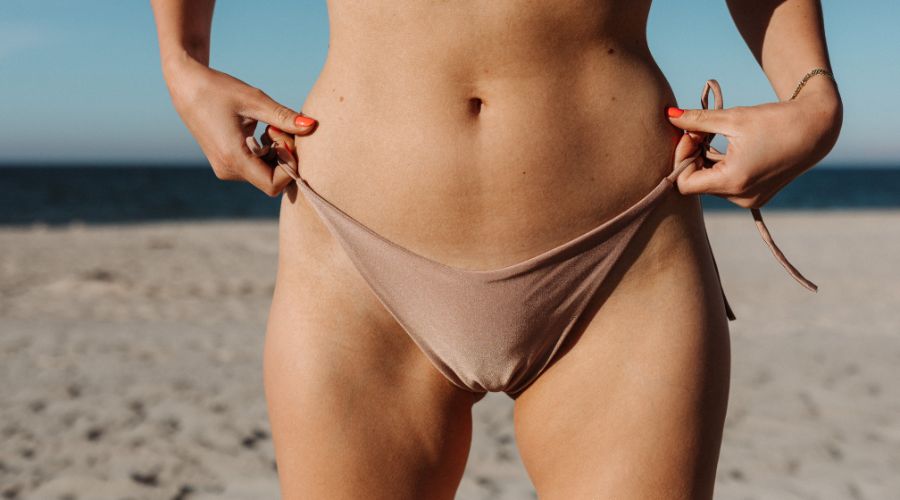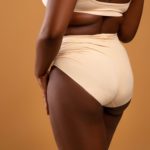It is fairly common after losing a significant amount of weight or after a pregnancy to be left with an extra fold of skin that hangs down from your belly. The accumulation of this extra skin and fat is known as apron belly and tends to affect women more than men, but it can affect anyone.
Depending on its severity, an apron belly can cause emotional and physical distress. If the skin and fat hang or extend far enough down, it can impede the individual’s ability to walk, get around, or perform their normal functions. In some cases, this hanging tissue can be quite heavy and cause pain or discomfort because it is pressing on the internal abdominal organs. This loose flap of skin can also result in rashes, skin irritation, or infections between the layers and require medical treatment. For many people who suffer from this issue, it makes it hard to wear clothing, causes social anxiety, and promotes unhealthy negative body image issues.
Today we are going to talk about apron belly surgery, which is the only effective treatment to eliminate this problem.
Do You Need Surgery To Remove Apron Belly?
Depending on how severe the overhang is, following a diet and exercise plan may help eliminate mild cases of apron belly. This would require creating a calorie deficit through consistent low-calorie, healthy dietary choices and an increase in exercise.
In more severe cases, a surgery called panniculectomy can be performed to remove the stomach apron. A tummy tuck (abdominoplasty) is another type of apron belly removal surgery that also corrects other cosmetic abdominal issues in addition to removing the loose skin.
What Is Involved In Surgery To Get Rid Of Apron Belly?
Eliminating apron belly can be done with one of two surgical procedures, including:
Panniculectomy
This type of surgery only attends to the loose skin and excess tissue that hangs down below the navel. The amount of tissue and skin involved in the overhang is categorized from 1 to 5 according to severity, with 5 being the worst. For instance, a level 1 would be excess skin and tissue that hangs down to just above the mons pubis area, and a level 5 would indicate that the overhang extended all the way down to the knees or further.
A panniculectomy only serves to eliminate the loose skin and tissue overhang and does not provide any additional corrections. The typical steps of the surgery include:
- The patient is sedated under general anesthesia;
- The surgeon creates an incision along the natural fold just above the pubic bone and extends it out to each side. The incision is deep through layers of tissue to the muscle;
- Excess skin and tissue are cut away and eliminated;
- The incision is closed up using several layers of stitching, which requires expertise, precision, and care so no bulging will occur. Special surgical drains are installed in the incision that will be removed by the surgeon when they are no longer needed;
- Special compression garments will be put on the patient over their taped incisions, which they will have to wear for several weeks during their recovery.
Tummy Tuck
This surgery will take care of overhanging skin and tissue, similar to a panniculectomy, but will also make additional cosmetic corrections. The abdominal muscles often become stretched or torn due to pregnancy or the stress of supporting excess weight. During a tummy tuck, unlike a panniculectomy, these are repaired, which makes the individual’s core much stronger as well as helps provide a more toned-looking torso. The typical steps used to perform a tummy tuck include:
- General anesthesia is administered so the patient is comfortably asleep during the surgery;
- The surgeon creates the necessary incisions. The type of incision will be determined by the extent of correction required. Typically, an incision is made across the lower abdomen between the hips, but sometimes a vertical incision is also created that runs downward from the belly button and intersects with the first incision;
- The surgeon uses liposuction to remove excess fat from different areas of the torso and abdomen to create a smoother, more-defined abdominal area;
- The abdominal muscles are pulled close together and repaired with sutures;
- Excess tissue and skin are cut away and eliminated;
- The remaining skin is draped over the slimmer abdomen, carefully pulled taut, and stitched in place. Often, surgical tape is used to cover these closing incisions during the initial recovery period. The patient may also have temporary surgical drains installed to help with swelling;
- Compression garments are placed on the patient, and they are taken to a recovery area for a few hours of observation.
Do I Need Apron Belly Surgery Or A Tummy Tuck?
The best way to know which procedure will provide you with the results you want is to consult with a knowledgeable, board-certified cosmetic surgeon.
If your concerns are concentrated on a flap of skin and tissue that hangs down from under your belly button, then apron belly surgery should be sufficient to remove it. If your abdominal muscles require repair and you have excess skin and tissue on the sides of your abdomen or above your navel, a traditional abdominoplasty would need to be performed.
Where Can I Get Apron Belly Surgery In Atlanta?
If you are tired of putting up with excess fat and skin hanging down from your belly and you want help dealing with it, IBI Plastic Surgery & Med Spa can help. Whether you are looking for help in Atlanta, GA or for apron belly surgery in Tampa, Florida, we can make your aesthetic dreams a reality.
IBI Plastic Surgery & Med Spa is known for its exceptionally talented team of board-certified surgeons who never fail to adhere to the highest standards of safety and deliver exceptional results. We are dedicated to helping you achieve the look you have always wanted through the enhancement of your natural beauty. We know that feeling your best is closely tied to looking your best, and we are committed to helping you reach your aesthetic goals. Set up a consultation appointment today to learn more!







